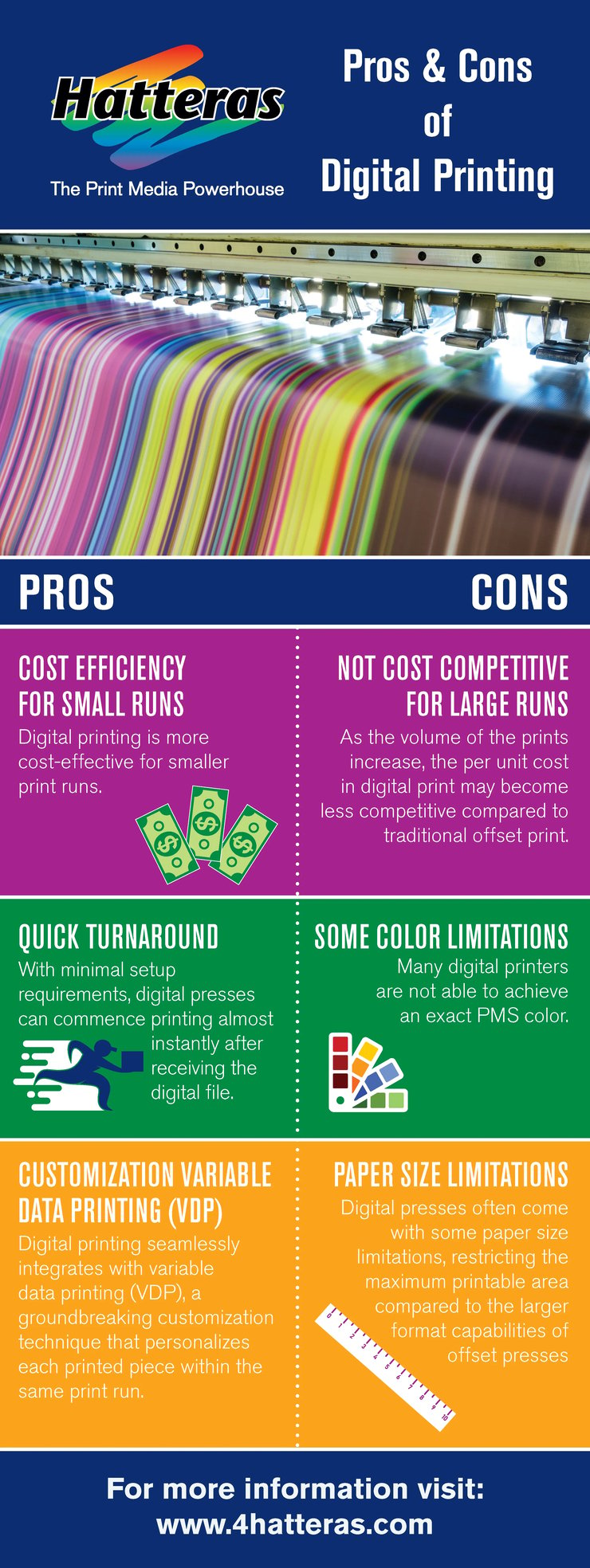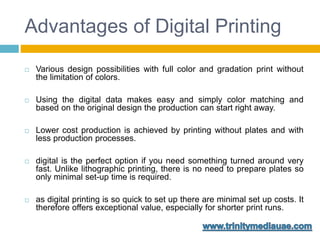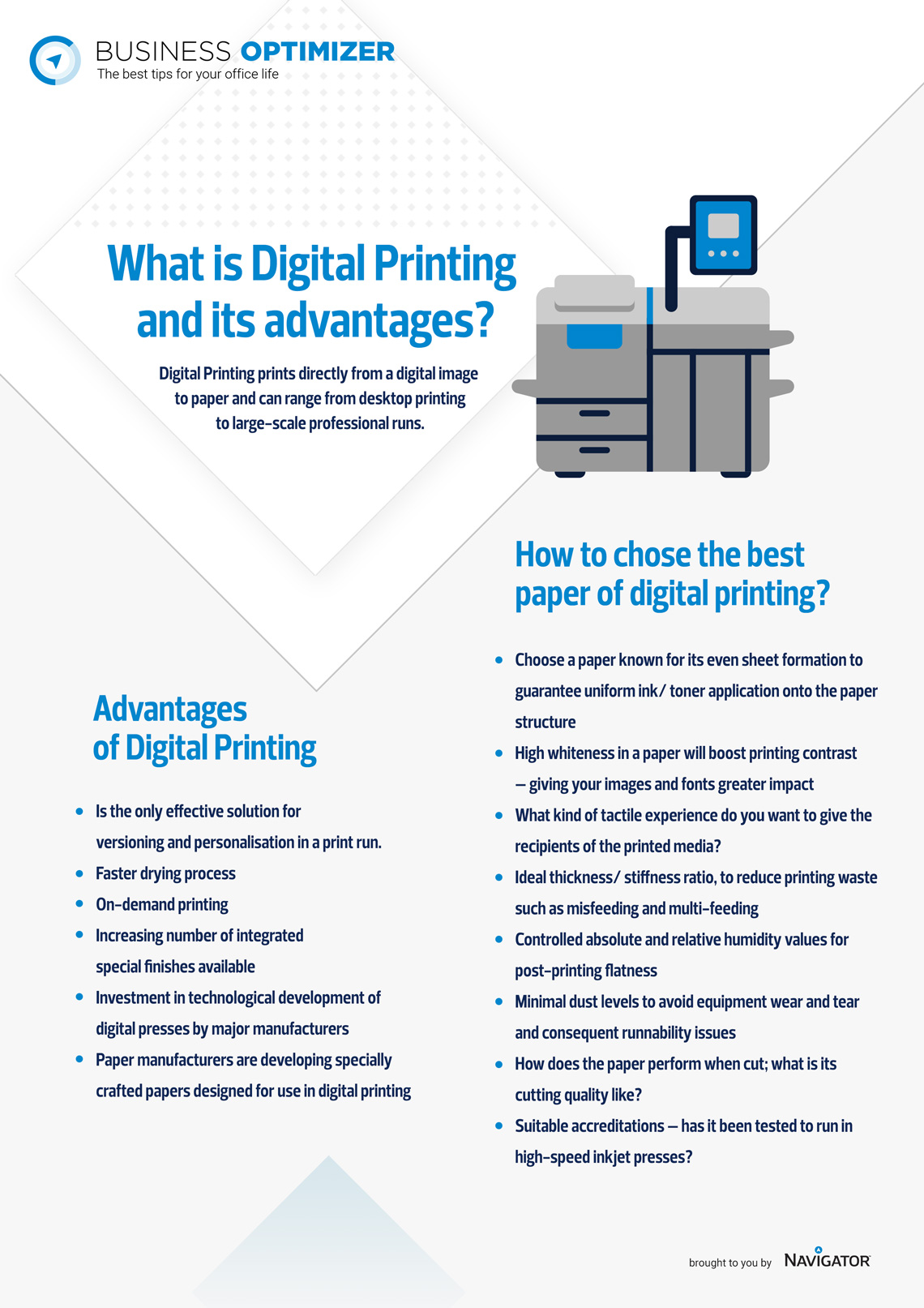All about Digital Printing
All about Digital Printing
Blog Article
The Only Guide for Digital Printing
Table of ContentsSome Known Incorrect Statements About Digital Printing The Digital Printing DiariesThe Greatest Guide To Digital PrintingOur Digital Printing PDFsNot known Details About Digital Printing Digital Printing - Questions
Variable data printing, such as straight mail with customized codes and addresses, is ideally fit for digital printing. Digital quick printing only needs 4 steps of layout, testimonial, printing and binding to get every little thing done. Digital fast printing has an exceptional advantage: print on need.According to PMMI, digital printing permits brand names and producers to respond promptly to client needs while boosting the supply chain, lowering warehousing price and waste, and appreciating faster time to market. That all sounds fantastic, yet just how does this modern technology do all that? The significant differentiator of these modern technologies is that there are no set up costs and no plates with digital printing.
The 10-Second Trick For Digital Printing
This results in quicker turn-around time and reduces expense when making use of electronic printing.
Digital printing is very adaptable, so it's very easy to make modifications to the package layout rapidly. It all goes back to the plates.
With conventional printing techniques, short-run printing is just not feasible. Due to the fact that a terrific style can make or break your product, digital printing consistently develops premium, clear and colorful graphics each time.
Digital printing is the process of printing digital-based images straight onto a selection of media substratums. There is no need for a printing plate, unlike with balanced out printing. Digital files such as PDFs or desktop publishing files can be sent out straight to the electronic printing press to print theoretically, image paper, canvas, material, synthetics, cardstock and other substratums.
The smart Trick of Digital Printing That Nobody is Talking About
According to PMMI, electronic printing allows brands and suppliers to respond swiftly to consumer demands while improving the supply chain, lowering warehousing cost and waste, and delighting in faster time to market. That all noises terrific, yet exactly how does this innovation do all that? The major differentiator of these innovations is that there are no set up fees and no plates with electronic printing.
According to Wikipedia, the biggest difference between digital printing and traditional techniques such as lithography, flexography, gravure, or letterpress is that there is no demand to replace printing plates in electronic printing, whereas in these analog printing approaches the plates are continuously changed. This results in quicker turn-around time and reduces expense when utilizing electronic printing.

Not known Facts About Digital Printing
A lot more inventory can imply even more waste in the future. With traditional printing methods, short-run printing is just not possible. Because a fantastic layout can make or damage your product, electronic printing continually develops top quality, clear and vibrant graphics each time. Digital printing on flexible bags includes the intense, dynamic, and precise graphics that virtually bid customers to reach out like this and touch them.

According to PMMI, electronic printing allows brands and manufacturers to respond swiftly to customer demands while enhancing the supply chain, minimizing warehousing price and waste, and taking pleasure in faster time to market. That all audios terrific, yet how does this modern technology do all that? The major differentiator of these technologies is that there are no set-up costs and no plates with electronic printing.
4 Easy Facts About Digital Printing Explained
According to Wikipedia, the best difference between electronic printing and conventional methods such as lithography, flexography, gravure, or letterpress is that there is no need to replace printing plates in electronic printing, whereas in these analog printing approaches home plates are continuously replaced. This results in quicker turnaround time and reduces price when making use of electronic printing.
Digital printing is highly versatile, so it's simple to make modifications to the bundle layout quickly. It all goes back to the plates.

See This Report on Digital Printing
Digital printing is the procedure of printing digital-based photos straight onto a variety of media substrates. There is no requirement for a printing plate, unlike with countered printing. Digital data such as PDFs or websites desktop publishing files can be sent out directly to the electronic printing machine to print on paper, picture paper, canvas, fabric, synthetics, cardstock and other substrates.
Report this page